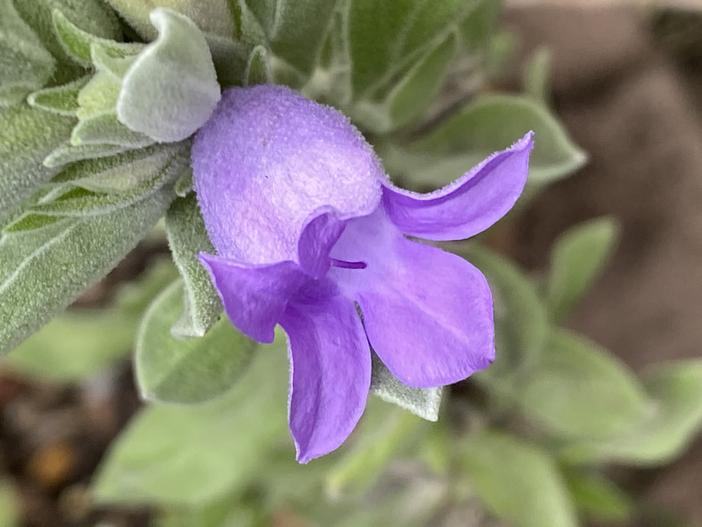Blue Emu Bush
(Eremophila hygrophana)
Blue Emu Bush (Eremophila hygrophana)
/
/

Allthingsnative
CC BY-SA 4.0
Image By:
Allthingsnative
Recorded By:
Copyright:
CC BY-SA 4.0
Copyright Notice:
Photo by: Allthingsnative | License Type: CC BY-SA 4.0 | License URL: https://creativecommons.org/licenses/by-sa/4.0 | Uploader: Allthingsnative | Publisher: Wikipedia Commons



















Estimated Native Range
Summary
Eremophila hygrophana, commonly known as Blue Emu Bush, is an evergreen shrub native to arid and semi-arid regions, including plains and rocky outcrops in Australia. It typically grows to a height of between 0.3 and 1.2 meters (1 and 4 feet) and is characterized by its erect, compact form with crowded, silvery-grey leaves. The Blue Emu Bush produces violet to purple flowers that are borne singly in leaf axils and are sessile, meaning they lack a stalk. The petal tube is pale violet to purple on the outside and paler with spotted purple inside. As the flowers age, they change color to dark reddish-brown. Flowering occurs from July to December, and the plant is followed by oval-shaped to cone-shaped fruits with a hairy covering.
The Blue Emu Bush is highly valued for its ornamental qualities, including its attractive foliage and large, showy purple flowers that bloom for an extended period. It is a popular choice for xeriscaping, rock gardens, and as a feature plant in water-wise landscapes due to its drought tolerance. This shrub is also used for habitat restoration in its native range. It requires minimal maintenance, making it suitable for gardeners seeking low-care plants. In cultivation, it thrives in full sun, with low water requirements, and prefers well-drained soils. While it is tolerant of light frost, it may require light pruning to remove frost-damaged branches. Propagation is commonly achieved through cuttings in warm weather or by grafting onto Myoporum rootstock, which can improve performance in heavy soils.CC BY-SA 4.0
The Blue Emu Bush is highly valued for its ornamental qualities, including its attractive foliage and large, showy purple flowers that bloom for an extended period. It is a popular choice for xeriscaping, rock gardens, and as a feature plant in water-wise landscapes due to its drought tolerance. This shrub is also used for habitat restoration in its native range. It requires minimal maintenance, making it suitable for gardeners seeking low-care plants. In cultivation, it thrives in full sun, with low water requirements, and prefers well-drained soils. While it is tolerant of light frost, it may require light pruning to remove frost-damaged branches. Propagation is commonly achieved through cuttings in warm weather or by grafting onto Myoporum rootstock, which can improve performance in heavy soils.CC BY-SA 4.0
Plant Description
- Plant Type: Shrub
- Height: 2-4 feet
- Width: 2-3 feet
- Growth Rate: Moderate
- Flower Color: Purple
- Flowering Season: Fall, Winter
- Leaf Retention: Evergreen
Growth Requirements
- Sun: Full Sun
- Water: Low
- Drainage: Fast
Common Uses
Bee Garden, Bird Garden, Border Plant, Butterfly Garden, Groundcover, Hummingbird Garden, Low Maintenance, Showy Flowers, Street Planting
Natural Habitat
native to arid and semi-arid regions, including plains and rocky outcrops in Australia
Other Names
Common Names: Lipstick
Scientific Names: , Eremophila hygrophana,
GBIF Accepted Name: Eremophila hygrophana Chinnock